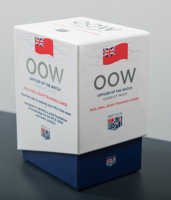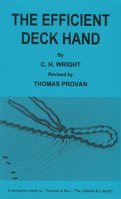Seamanship
Covers all the skills you will need to become a knowledgable seafarer.
The workboat code: the safety of small workboats and pilot boats a code of practice, Edition 2
£35.00
The content in this printed edition matches the August 2019 amended version available on gov.uk.
Weather at Sea
£14.99
“In this slim book there is so much valuable technical information about why and how weather systems develop and play out… most of us would find it to be an invaluable on-board companion.” Royal Cruising Club
Seamanship 2.0
£17.99
Everything you need to know to get yourself out of trouble at sea. Authors want to inspire small boatowners to improve their seamanship so they are able to help themselves in an emergency.
MNTB Safety Courses Criteria, 2nd Edition
£40.00
This publication provides the criteria for the development of training courses to deliver training in personal safety and social responsibility (PSSR), entry into enclosed spaces and shipboard safety officer training.
Officer Of The Watch (OOW) Training Flip Cards
£125.00
These cards have been developed to help candidates establish a solid foundation of knowledge for the MCA OOW oral exam,
<3,000 GT Yacht.
A Knot a Day
£16.99
This beautifully produced compendium gives you a knot challenge for every day of the year. With hundreds to choose from, all colour coded by use, you can work through the book from start to finish, gradually building on your knowledge as you go, or alternatively dipping in and out for your daily knotting fix.
MNTB Course Criteria for ECDIS Simulator Training, 3rd Edition
£40.00
This document provides the requirements for Electronic Chart Display and Information Systems (ECDIS) certification, set out in Chapter II of the 1978 STCW Convention, as amended. It also includes corresponding sections of the STCW Code.
MNTB Course Criteria for Efficient Deck Hand
£40.00
This document provides the Efficient Deck Hand (EDH) Certificate and Examination Syllabus as part of the requirement leading to the issue of an STCW Able Seafarer Deck Certificate (Regulation II/5). This training is required by seafarers seeking certification under MSN 1862 (M) or MSN 1856 (M+F).
The Efficient Deck-Hand
£40.00
It contains easily assimilated information on elementary ship construction,compasses, steering, anchors, fire fighting, rope work and knots, splicing multi-plat and wire ropes, lifting tackle, MacGregor hatches, hazardous cargoes and routine maintenance.
ISGOTT - International Safety Guide for Oil Tankers and Terminals, 6th Edition, OCIMF
£420.00
Effective management of Health, Safety and Environmental protection is critical to the tanker industry and The International Safety Guide for Oil Tankers and Terminals (ISGOTT) has become the standard reference on the safe operation of oil tankers and the terminals they serve.
Nicholls's Seamanship and Nautical Knowledge, 30th Edition
£65.00
Nicholl's Seamanship and Nautical Knowledge has for many years been recognised as a standard textbook on nautical subjects. It is a companion volume to Nicholl's Concise Guide, the popular text book on Navigation.
The Directory of Flags: A guide to flags from around the world
£5.00
£9.99
SPECIAL OFFER - 50% DISCOUNT



































